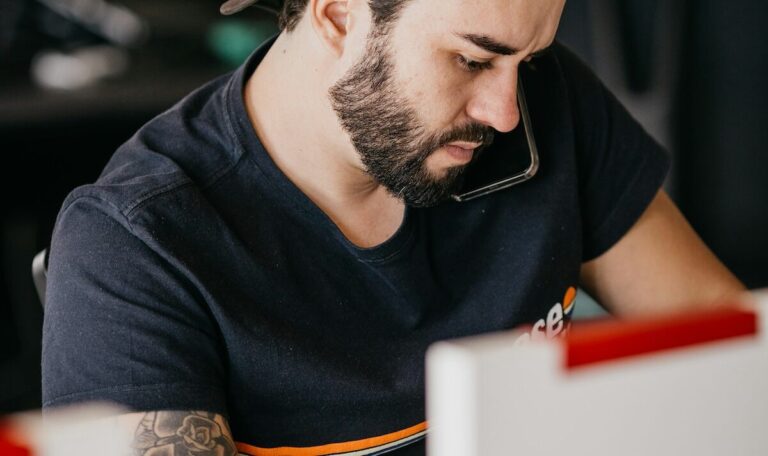
Some scars are badass and come with a backstory that makes for great cocktail party fodder. However, most of us didn’t get stitches from going blow to blow with a croc in Costa Rica or attempting a 900 aerial at a local skatepark. Nope, for the most part they come from a bout of clumsiness or a surgery we’d prefer to forget. Whichever the case, if Polysporin didn’t do the trick and you’re left with an unsightly blemish on your otherwise perfect epidermis then you’re wondering if a tattoo is a viable option to cover it up. There’s no clear cut answer to this query as every case is different, but we can provide you with the intel you need to determine your next course of action.
5 Things You Need to Know If You’re Considering a Tattoo to Cover Up a Scar
1. Wait Until Well After It Has Healed
It goes without saying that you need to wait until a scar has fully healed before any professional tattooist will touch it, but that’s not the main point here.
If you recently sustained an injury that has resulted in a scar, it may not be as aesthetically impactful as you think. Over time, collagen breaks down at the site of your original wound and the blood supply is reduced. With each passing month, the scar becomes smoother, softer, and paler as long as you afford it an optimal skin care regime and minimize exposure to the sun. In about 18 months to two years, you will have a much better idea of what you scar will look like. At that point you it won’t change much more unless you attempt topical applications such as scar creams. However, bleaching agents and the like can cause more harm than good, so proceed with caution. Long story short, wait for the adequate passage of time before making the decision to use a tattoo to cover up a scar, especially if that’s your primary motivation for getting inked in the first place.
Another motivator for waiting until your scar has healed and the skin has formed a firm layer, is pain. A relatively fresh scar, even if ready to accept a tattoo, will hurt more (assuming no nerve damage) than the same area would before your injury.
2. Scars That Protrude
A scar which protrudes from the skin to form a fleshy growth is much more challenging to tattoo over, and may be met with resistance from tattoo artists. Keloids are especially problematic. Keloids are raised scars that grows larger and wider than the original injury, and are often discolored. Given the dramatic visible impact, someone with a keloid scar may be passionate about getting a tattoo to cover it, but as a person who is predisposed to developing keloids, a tattoo may send the body into defense mode and worsen the scar, resulting in the exact opposite of its intent.
3. Tattoo Acceptance Rate
While many scars can be tattooed over with great success, there may be some challenges. In some instances, ink placement over scar tissue can appear less sharp/crisp. In other cases, scar tissue can become so tight or contracted that it can may reject ink particles in some areas, leaving ink-less gaps in the tattoo design. And in some examples, the scar tissue will attach itself to the myofascial layer or even surrounding nerves and blood vessels, further impacting the potential for success. In the end, you may end up requiring longer and/or more follow up sessions that originally estimated, which can increase the overall cost of getting the tattoo. Make sure you have some buffer in your budget to account for this.
4. Risk of Re-Injury
We asked you to consider this in a recent article about where on the body to get a tattoo, and it applies here as well. Your lifestyle choices may have resulted in the injury that resulted in the scar. If you have no intention of changing your actions (i.e. participating in extreme sports, stage diving, etc.) then understand that you face a risk of re-injury. For example, if you have a forearm scar from a surgery that followed a skateboarding fall and you continue to ride, the chance of injury to the same forearm (which is now weaker than it was before) is greater, and you may find yourself getting “opened up” again in the same spot.
5. A Tattoo That Works With Your Scar (Instead of Covering it Up)
Instead of using ink to cover up a scar, how about looking at the big picture and working it into a tattoo design? This is an option for those of you with large, raised, and/or deep pigmented scars. Together with a tattoo artist (or on your own) you can come up a creative vision to turn the lesion into a real work of art. This will all depend upon personality, tastes, and preferences, of course. For example, if you’re a BIG fan of horror films, you can get a tattoo of Chucky (or Jason, Freddy, etc.) wielding a knife at the site of your old injury. Or, on a deeper level, some people may choose to add an inspirational quote around the scar, especially if they are a survivor of an accident or ailment that called for surgery that resulted in the scar. The possibilities are endless, so if you find that an outright tattoo cover up is not viable, considering embracing your scar with a well thought out design.
Last but not least, we must conclude with a statement about choosing a reputable tattoo studio. You will want to find one with an artist (or artists) who have experience in tattooing over scars, one that has an outright scientific understanding of the human skin including mesodermal cells and pigmentation. If you live within (or can visit) the Greater Vancouver or Toronto area, we encourage you to contact the most convenient shop for you and schedule a FREE consultation to discuss your scar cover up options.


